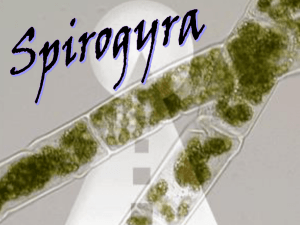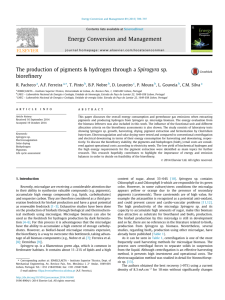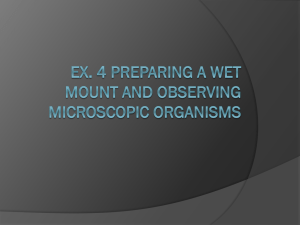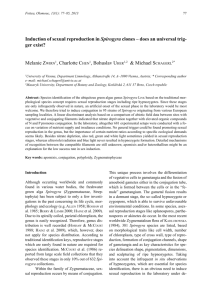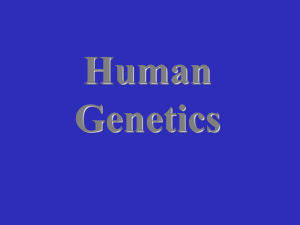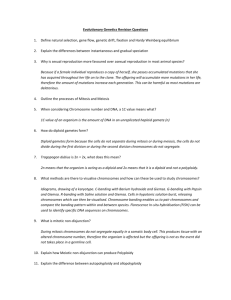Abstract Uher Chantransia 2012 - IS MU
advertisement
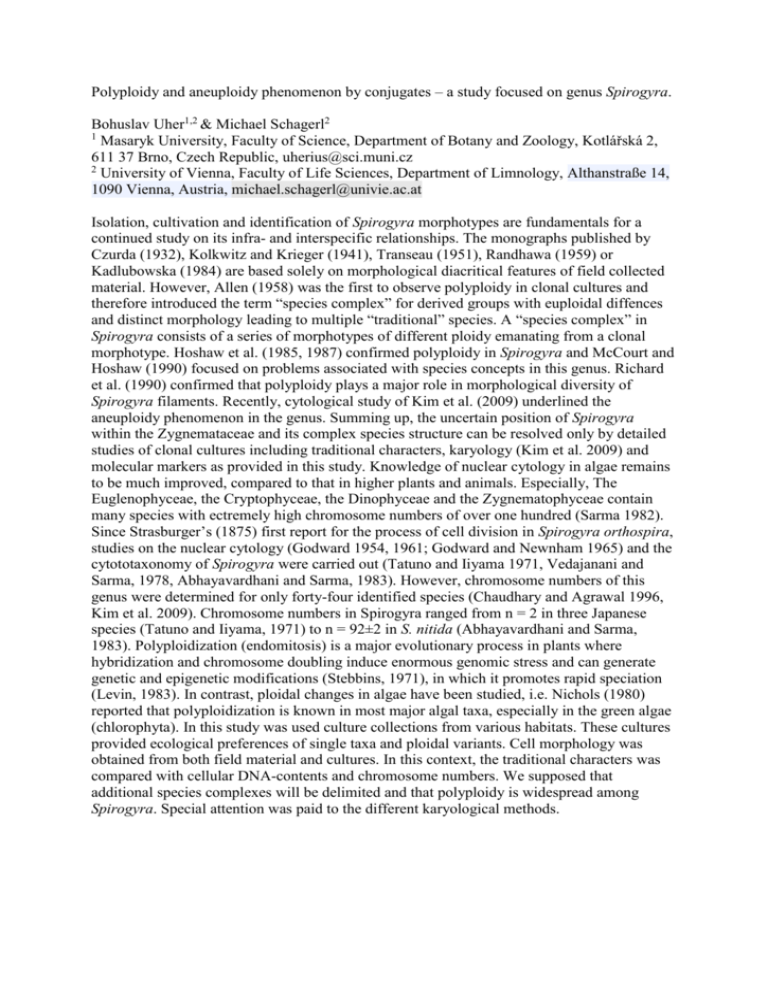
Polyploidy and aneuploidy phenomenon by conjugates – a study focused on genus Spirogyra. Bohuslav Uher1,2 & Michael Schagerl2 1 Masaryk University, Faculty of Science, Department of Botany and Zoology, Kotlářská 2, 611 37 Brno, Czech Republic, uherius@sci.muni.cz 2 University of Vienna, Faculty of Life Sciences, Department of Limnology, Althanstraße 14, 1090 Vienna, Austria, michael.schagerl@univie.ac.at Isolation, cultivation and identification of Spirogyra morphotypes are fundamentals for a continued study on its infra- and interspecific relationships. The monographs published by Czurda (1932), Kolkwitz and Krieger (1941), Transeau (1951), Randhawa (1959) or Kadlubowska (1984) are based solely on morphological diacritical features of field collected material. However, Allen (1958) was the first to observe polyploidy in clonal cultures and therefore introduced the term “species complex” for derived groups with euploidal diffences and distinct morphology leading to multiple “traditional” species. A “species complex” in Spirogyra consists of a series of morphotypes of different ploidy emanating from a clonal morphotype. Hoshaw et al. (1985, 1987) confirmed polyploidy in Spirogyra and McCourt and Hoshaw (1990) focused on problems associated with species concepts in this genus. Richard et al. (1990) confirmed that polyploidy plays a major role in morphological diversity of Spirogyra filaments. Recently, cytological study of Kim et al. (2009) underlined the aneuploidy phenomenon in the genus. Summing up, the uncertain position of Spirogyra within the Zygnemataceae and its complex species structure can be resolved only by detailed studies of clonal cultures including traditional characters, karyology (Kim et al. 2009) and molecular markers as provided in this study. Knowledge of nuclear cytology in algae remains to be much improved, compared to that in higher plants and animals. Especially, The Euglenophyceae, the Cryptophyceae, the Dinophyceae and the Zygnematophyceae contain many species with ectremely high chromosome numbers of over one hundred (Sarma 1982). Since Strasburger’s (1875) first report for the process of cell division in Spirogyra orthospira, studies on the nuclear cytology (Godward 1954, 1961; Godward and Newnham 1965) and the cytototaxonomy of Spirogyra were carried out (Tatuno and Iiyama 1971, Vedajanani and Sarma, 1978, Abhayavardhani and Sarma, 1983). However, chromosome numbers of this genus were determined for only forty-four identified species (Chaudhary and Agrawal 1996, Kim et al. 2009). Chromosome numbers in Spirogyra ranged from n = 2 in three Japanese species (Tatuno and Iiyama, 1971) to n = 92±2 in S. nitida (Abhayavardhani and Sarma, 1983). Polyploidization (endomitosis) is a major evolutionary process in plants where hybridization and chromosome doubling induce enormous genomic stress and can generate genetic and epigenetic modifications (Stebbins, 1971), in which it promotes rapid speciation (Levin, 1983). In contrast, ploidal changes in algae have been studied, i.e. Nichols (1980) reported that polyploidization is known in most major algal taxa, especially in the green algae (chlorophyta). In this study was used culture collections from various habitats. These cultures provided ecological preferences of single taxa and ploidal variants. Cell morphology was obtained from both field material and cultures. In this context, the traditional characters was compared with cellular DNA-contents and chromosome numbers. We supposed that additional species complexes will be delimited and that polyploidy is widespread among Spirogyra. Special attention was paid to the different karyological methods.
